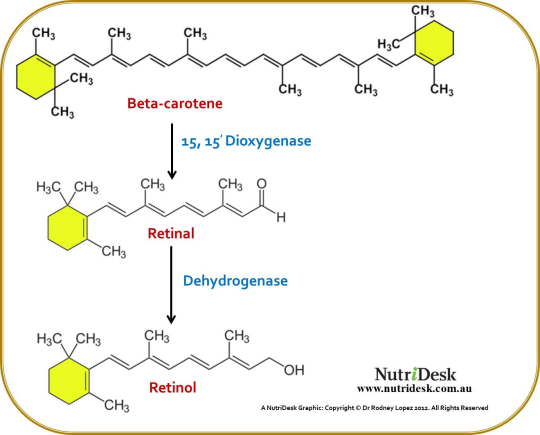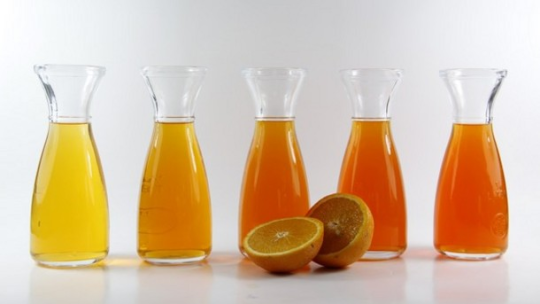#carotenoids


β-Carotene (C40H56) is a naturally occurring terpenoid found in many vegetables and fruits, most famously in carrots. Under normal conditions, it exists as dark orange crystals. As a hydrocarbon, it is relatively non-polar and hence insoluble in water, but soluble in ethanol and hexane.
β-Carotene is a well-known nutrient; you may have seen it as an advertising point for products ranging from fruit juices to skin creams. It acts as a provitamin, as each molecule of β-carotene can be broken down in the body to form 2 molecules of retinal (a form of Vitamin A), which is needed for the maintenance of the immune system and good vision.

It is also sometimes used as a natural food colouring. Due to its intense orange colour, minute amounts are sufficient to colour a large amount of foodstuffs. (Below: solutions of varying concentrations of β-carotene)

β-Carotene can be found in a variety of sources, including carrots, pumpkins, and beef liver. It is also present in palm oil, as well as some green leafy vegetables such as spinach, where its orange colour is masked by the presence of chlorophyll.

While β-carotene is present in many different types of food easily available in developed countries, many of them are difficult to obtain or store in developing countries. Consequently, many living in African and South Asian countries suffer from Vitamin A deficiency, which leads to night blindness.
To combat this phenomenon, Golden rice, a genetically-modified organism, is being developed.The genes coding for the enzymes phytoene synthaseandcarotene desaturase were inserted into the rice genome, allowing it to produce β-carotene from geranylgeranyl diphosphate, which is already present in the plant.

As a result, the rice grains produced from the plant have an orange colour, compared to the typical white grains from a normal rice plant, giving the crop the moniker Golden rice.

While β-carotene has many benefits, overconsumption can lead to an unfortunate but otherwise relatively harmless side effect, known as carotenodermia. As β-carotene is extremely lipophilic, it tends to be deposited inside our fat stores, manifesting as an orange discolouration of the skin. That aside, however, it is considered relatively non-toxic, as its metabolism to Vitamin A is controlled by the amount of Vitamin A in the body. As a result, an overdose of Vitamin A and hence toxicity is avoided.
That’s it for today’s molecule! Remember to eat your greens - and oranges too!

